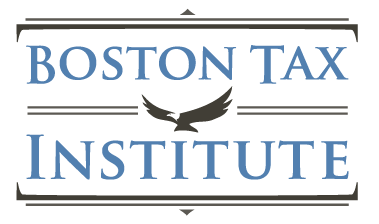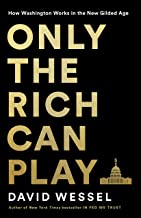Only The Rich Can Play: How Washington Works in the New Gilded Age by David Wessel became a must read for me after a favorable review by Edward W. De Barbieri. I was hoping for it to be comparable to Showdown at Gucci Gulch, the great account of the passage of the Tax Reform Act of 1986. That might have been a bit like my attempt to compare Paradise Atop The Hudson to Middlemarch.
OZ
Mr. Wessel gives us an account of the origin story of IRC Sections 1400Z-1 and 1400Z-2 that govern Opportunity Zones (OZ). OZs are census tracts with a strong concentration of low-income people. There are over 85000 census tracts dividing up the country (including Puerto Rico and other “island areas” like Guan) by population. Census tracts vary immensely in geographic size. Rhode Island has more census tracts that either Alaska or Wyoming. State governments got to select among the qualifying tracts in their state. 8,764 made the cut.
Taxpayers with capital gains, long or short, from pretty much anything can invest their gains in Qualified Opportunity Funds. There are two, possibly three, benefits. The benefit that seems to generate the most excitement is that recognition of the capital gain is deferred till 2026. In earlier years there would also be a reduction in the taxable gain. The really big incentive is that after 10 years any gain from the QOF investment is tax free. OZ became law as part of the Tax Cuts and Jobs Act of 2017.
The Origin Story
OZ has a really fascinating origin story which Mr. Wessel tells in a very engaging manner. He introduces Sean Parker, who is now my favorite billionaire after Warren Buffett. We get Parker’s life story from precocious coder who was tracked down by the FBI for his hacking when he was sixteen to founding Napster and on to an early role in Facebook which is apparently the source of his fortune.
My favorite tidbit about Parker was this one:
Parker and singer and actress Alexandra Lenas were married in June in a multimillion-dollar wedding at a hotel campground under the redwoods at Big Sur. It was a you-can’t-make-this-up moment of nerdy-billionaire excess. Each of the 364 guests (including then California attorney general Kamala Harris) was outfitted in a Lord of the Rings costume made by the designer who won an Oscar for the movie.
Parker made note of place based inequality and hoped to find a way to get people to invest in areas that needed more investment. He thought that people like himself sitting on huge unrealized capital gains might be part of the solution.
“There was all this money sitting on the sidelines,” said Parker, who was guarding an enormous as-yet-untaxed capital gain himself. “I started thinking: How do we get investors to put money into places where they wouldn’t normally invest?”
Being a billionaire and all allows Mr. Parker a lot of access by being able to make political contributions, but the combination that ended up creating OZ was rather amazing. With Sever Glickman and John Lettieri he founded the Economic Innovation Group a 501(c)(4) bipartisan think tank in 2013. In 2014 Glickman told Parker that it might take five to ten years to bring something into law. The ideas had some things that helped though
In fact, Opportunity Zones would combine several of the key ingredients that do make things happen in Washington: Every state and nearly every city would get a piece of it. It would be wrapped in do-good-for-the-poor packaging. Wealthy, tax-averse, campaign-contributing constituents would benefit. Ribbon cuttings and press releases for politicians would proliferate. And because of the way Congress keeps its books, it wouldn’t appear to cost as much as it truly did.
Art Of The Deal
The story of how they managed to get OZ over the line in less than five years is fascinating. There is the intellectual spadework and the building of bipartisan support that results in a bill that fails to pass in 2016. There was still substantial support. As it turned out, in this account, the key supporter was Tim Scott, the first African American senator from South Carolina and the first African American Senator from the South since Reconstruction and a Republican.
The initial version of TCJA 2017 did not include OZ. So what happened ? Charlottesville happened. At a rally in response to the removal of a statute of Robert E Lee, a white supremacist rammed his car into a crowd killing a counter-protester. President Trump remarked that there were “very fine people on both sides.
That was too much for Tim Scott. He responded on Twitter that same day: “There is absolutely NO gray area when it comes to condemning groups who breed on racism, hate and division.” He didn’t mention Trump by name but said, “Let us not repeat history with ambiguity when it matters the most. From my house to the White House, let’s be clear.”
Trump invited Scott to the White House and after some preliminaries went for a deal.
As the forty-minute meeting neared its end, Scott recalls the president said, “Tell me what I can do to be helpful to the people I’ve offended.” Scott was prepared. His answer: help me get Opportunity Zones into the tax bill. Trump hadn’t heard of Opportunity Zones, but as a real estate guy it didn’t take him long to grasp the concept. He promised to do what he could. It was a well-timed pitch. Trump was very focused on getting a tax cut through Congress. Later that afternoon, the phone rang in Ja’Ron Smith’s office. It was Marc Short, then the chief White House lobbyist. “Tell me about Opportunity Zones,” he said. “The president likes it. The president wants to see if we can get this into tax reform.”
The author portrays brilliant work going into making OZs happen, but he adopts a really annoying attitude in referring to the team as the “EIG boys”-not once or twice but seventy-six times. The “boys” seems directed at supporting his evaluation of how the program is playing out in his view..
I don’t think Sean Parker, his congressional allies, Tim Scott and Cory Booker, and his field commanders, Steve Glickman and John Lettieri, are venal. They did not set out to make the rich richer. They really did intend to craft a tax break that would prod the rich to put their money into left-behind places that sorely need it. They are, instead, idealistic, arrogant, stubborn, and naïve.
Who Is Naïve ?
Wessel did not start with the origin story, but rather began in media res at a May 2019 Las Vegas convention promoting OZs. I really enjoyed that part. There were these odd bits of concern though:
Rule number one is that, unlike the hundreds of slot machines I just passed, this game can’t be played by most Americans. Players must have a capital gain: a profit from the sale of stock, real estate, art, or some other asset.
So tax incentives are for people facing tax liabilities. He describes the various sorts of people at the convention topping it off with
And then there are the middlemen—legions of lawyers and accountants, financial advisers and wealth managers, consultants and service providers, podcasters and website operators—panning for their share of the gold as money flows from rich people to buildings and businesses in Opportunity Zones.
He notes that many of the middlemen were well versed in 1031 deals. It strikes me that colorful as the event was it might not have been the best place to get an objective sense of how good a tax deal OZs really are. Come 2026 there are probably going to be some unhappy people, although proposed legislation may kick the can down the road another two years.
Dueling Anecdotes
Much of the balance of the book is about projects which for the most part seem to have dubious benefits to anybody other than the backers and investors. Wessel traveled the country finding examples of projects that appeared to have no benefit to low income people or would have happened anyway without the incentives. The conclusion of each instance was “Don’t blame the players, blame the game.” We get that seventeen times including a chapter heading. It got a little tedious.
Then there are some instances of projects that seem to help the neighborhoods. One of the weaknesses of the program is that adequate reporting provisions were not included, a byproduct of the way TCJA was passed. The proposed legislation that would further defer gains also addresses that.
Overall
This is an enjoyable book, that does not make its case very well at least to me. I ended up liking the “EIG boys” and Sean Parker more after reading it. If you check out the Amazon AMZN reviews they are both positive and negative and I ended up agreeing with most of them. I reached out to Calvin H. Johnson who is the harshest critic of OZs that I know of, for another point of view.
Wessel wants reform of Ozones when repeal is the only remedy. If something good happens in Erie Pa, it is not because of OZones. Ozs drive up rents and drive out the poor. The poor rent, and have no tenure and do not participate in the influx of investment. They are just sent on the road. Unlike Urban Renewal there is no obligation to resettle the wandering poor. Wessel wants to find good in OZs against all theory, notwithstanding his start with anti-plutocrat rhetoric.
If you would like to hear from Wessel himself, check this out.
Originally published on Forbes.com.
For great value continuing professional education. I recommend the Boston Tax Institute

You can register on-line or reach them by phone (561) 268-2269 or email vc@bostontaxinstitute.com. Mention Your Tax Matters Partner if you contact them.































































































